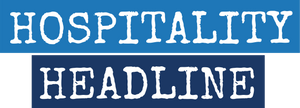Philanthropy is a powerful force, but when it's done without intention, it can do more harm than good. In today’s newsletter, we explore how to shift from toxic charity to transformational giving. It’s not just about what we give—it’s about how we give and the long-term impact we create.
Compassion Without Clarity Is Harmful
“You can’t give what you don’t have, but worse, you can’t give what they don’t need.” This quote is a powerful reminder that charity must be intentional and thoughtful, or it can cause unintended harm. Toxic charity occurs when our giving doesn’t meet real needs or empower those we aim to help. For example, a nonprofit might build wells in a village, only for them to be abandoned after a year. Why? There was no ownership, no sustainability. Giving should create lasting solutions, not temporary fixes.
The Five Signs of Toxic Charity
There are clear signs when charity turns toxic:
- Short-Term Relief Masquerading as Long-Term Help – Emotional responses often replace strategic solutions.
- Disempowerment Disguised as Generosity – Giving that takes away agency, dignity, and creativity.
- Lack of Accountability – Funds provided without measurable impact or responsibility.
- One-Way Giving – Without an exchange of value, there’s no energy flow.
- Creating Dependence Instead of Independence – When giving rescues rather than empowers.
Recognizing these signs allows us to shift toward a more sustainable and empowering model of giving.
The Energetics of Giving: Value Received = Value Perceived
True philanthropy is not about how much we give, but about how it’s received. David Meltzer’s principle, “You can’t over-give if you allow others to receive,” reminds us that giving should empower others, creating an exchange of value. Charity should be driven by results, not optics. When we align our giving with measurable outcomes, we ensure that our impact is both meaningful and sustainable.
The 5 Cs of Transformational Charity
To move from toxic to transformational giving, we need to follow a clear framework the 5 Cs:
- Clarity – Understand the actual needs of the people you are helping, not just your assumptions.
- Collaboration – Involve those you are serving in the solution-making process.
- Contribution – Ensure everyone gives something, whether it’s time, effort, or voice.
- Capacity-Building – Fund solutions that can outlast your financial support.
- Connection – Build lasting relationships, not just temporary relief.
Case Studies: Toxic vs. Transformational
Consider the difference between toxic charity, like donating shoes every year to kids, which ultimately kills local cobbler businesses—and transformational charity, such as offering microloans and mentorship that empower local entrepreneurship. The shift from being a “savior” to a “servant leader” is key to creating lasting change.
How Entrepreneurs Can Give With Intention
Entrepreneurs and leaders have a unique ability to drive real change. By adopting the “Make a Lot, Help a Lot, Have a Lot of Fun” approach, you can give intentionally and create compassionate capital—funding results, not just goodwill. Focus on metrics like growth, independence, and tangible impact to measure success.
Call to Action: Become a Conscious Contributor
Ask yourself:
- Is my giving solving a problem, or prolonging one?
- Am I doing this for them or with them?
- Will this initiative still exist once I stop funding it?
True giving empowers others to never need your help again. Let’s all aim to give with intention, clarity, and sustainability to create real, lasting change.
P.S. If you're interested in a Free signed copy of my book, just email me directly at david@dmeltzer.com or click HERE

